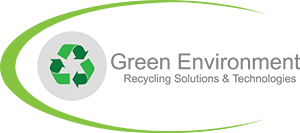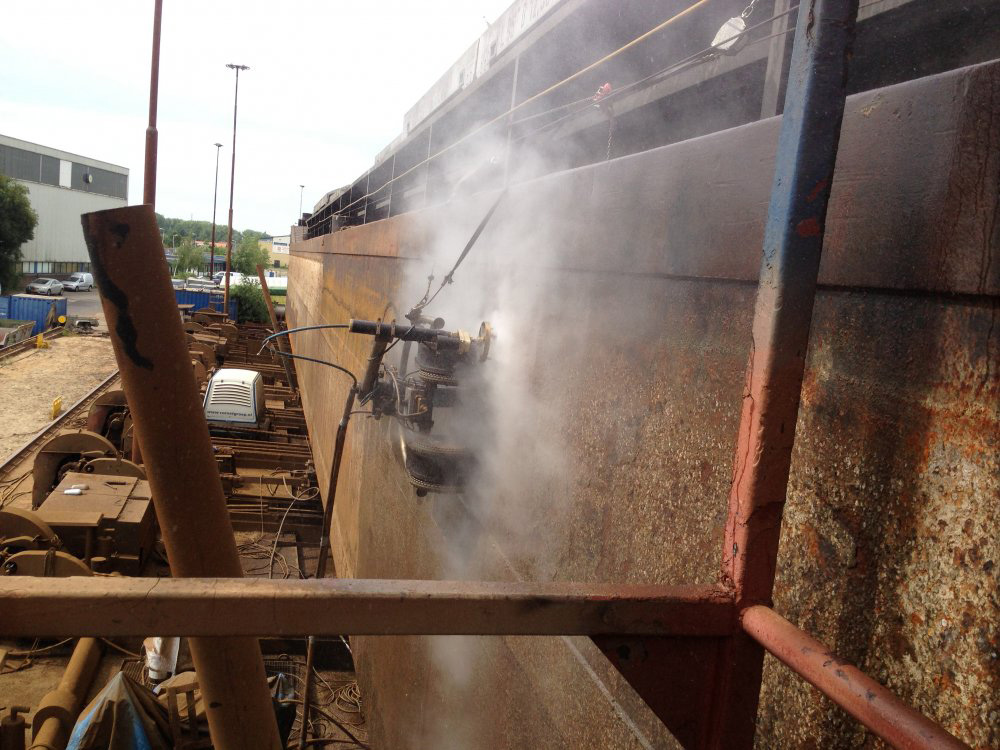Industrial Cleaning
- High-pressure cleaning of heat exchangers, cooling installations, pipes, tanks and other industrial equipments.
- Industrial cleaning services using vacuum trucks, high pressure pumps, etc.
- Management and maintenance of industrial equipment.
- Predictive and preventive maintenance.
- Industrial equipment maintenance.
- Collecting and processing services for the disposal and recovery of the waste resulting from the industrial cleaning process.
The advantages of Uni-Recycling offered technology:
Safety: Remote operation protects the operator
Flexibility & Efficiency: Can be effectively adapted to the conditions of the beneficiary’s locations
Efficiency: The system insures increased cleaning productivity
Heat Exchangers Cleaning
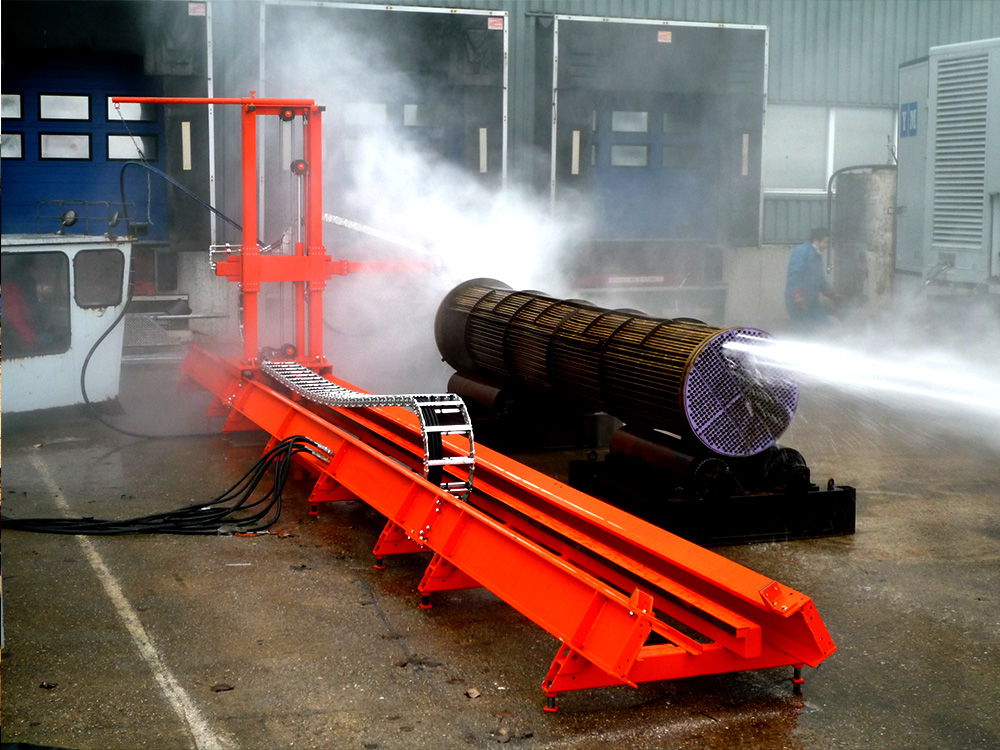
Air Coolers
- Unclogging of blocked pipes
- Exterior cleaning of tube bundles
- Interior tube cleaning using high – pressure cleaning equipment
- Replacement of damaged pipes
Pipeline Maintenance (Intelligent Piping)
Can be executed with small interruption of the product transportation (the process is interrupted only to insert the “pig” system into the pipe).
Pushed by compressed air or even by the transported product, the “pig” travels through the pipe scrapping the walls and thus pushing the debris and deposits to the other end of the pipe
Column & Tower Cleaning
- We perform column/tower cleaning, in accordance with the highest international safety standards
- The rotating pressure nozzles ensure an efficient cleaning
Pipe & Sewerage Systems Cleaning
Turnaround Services
ECONOMY, EFFICIENCY AND MAINTENANCE OF INDUSTRIAL EQUIPMENT
During the operation of industrial equipment, problems caused by deposits may appear. In such a case a reduction of production capacity followed by unscheduled interruptions would be the logical consequence, which has to be avoided at all costs.
Our vast experience in several successfully completed national and international maintenance operation services ensures an optimum solution for any refinery production cycle.
The fast intervention of Uni-Recycling experts and the use of state-of-the-art equipment guarantees a professional approach of such an issue including a proven record of success.
Hydroblasting & Pickling
Automatic equipment for pickling large vertical surfaces
Characteristics:
- It adheres to the surface to be cleaned by vacuum, this vacuum is used to collect all wastewater and solid stripped, leaving a dry surface, ready to paint without soiling the work area
- It moves air motors
- It reaches up to 3.000 bars pressure
- It performs sweeps up to 70 m2/h depending on the quality of the layer pickling
- Operation by remote control, which put the workers away from the potential source of risk and avoids work at height
- Unlike what happens in conventional blasting, does not requires any installation or use of scaffolding platforms for cleaning itself, neither the final cleaning of the spent sand. The platform can be useful if you require a closer visual inspection.
- Does not pollute the land with the extracted residue because it is aspirated directly into the tank of the truck.
Applications:
- Pickling, to the extent required by the client (equivalent to sand blasting), large areas such as steel and concrete tanks, spheres, chimneys, boats, walls
- Pickled of surface for inspection (spheres, reactors, tanks)
- Removal of rust, paint
- Sanitation of concrete
- Removal ebonite from tanks and reservoirs
- Cleaning and preparation of large surfaces
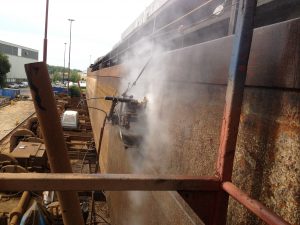
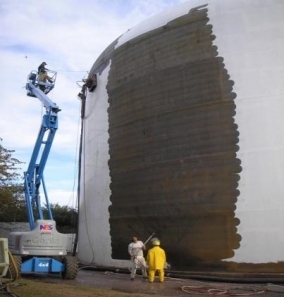
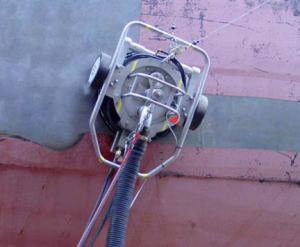
Corrosion Protection Services
All corrosion protection systems are used to guarantee extended service life and thus reduced maintenance costs, environmental protection and occupational safety.
Corrosion Protection – Automated decoating of tanks / vessels and various process system parts
- Various blasting machines and airless units
- Compressors from 6 bar & 8 cbm to 14 bar & 21 cbm
- Dust extraction units from 12,000 cbm to 20,000 cbm
- Air conveying systems for suction cleaning of blasting abrasives
- Sandblasting
- Decoating
- Concrete restoration
- Applying of different coating systems
- Applying of different rubber coating systems
- The application of the coating systems can be performed by spraying, rolling or brushing.
- The first method mentioned is generally considered a coating system.
All components, although made of concrete or steel, must be prepared according to certain guidelines. When choosing suitable surface systems, due consideration must be given to the applications and properties of the layers to be applied and the design features.
The main factors in this regard are the geometry and the surface condition of the system components, pretreatment of the surfaces, material of the system component and the coating process itself.
- The application of the coating systems can performed by spraying, rolling or brushing.
- The first method mentioned is generally considered a coating system.
- In the case of rubber coating, an elastic layer (between 2 – 6 mm), consisting of rubber (natural or synthetic), is applied to system components (steel or concrete).
- For this purpose, an adhesive system is applied (spraying or brushing) and then the rubber sheets are laid on the component surfaces.
Coatings can be color systems or coating systems. Color systems are primarily used for the protection of plant components, parts and structures in the outdoor area against environmental influences such as: (rain, salty or acidic air).
Coating systems are mainly used for protection against very aggressive media, like for containers, storage tanks, flue gas ducts, concrete surfaces or steel structures or plant components.
Use of rubber coating
For the protection against a wide variety of abrasive and corrosive media, rubber coating is used as a korrosion resistant liner for container, pipes, concrete components, floors and process plants.
It come today rubber as linings in a thickness of 2 mm to 6 mm as a hard or soft rubber for use.
Chemical Cleaning Services
System Flushing Process
With the system flushing, Uni-Recycling has developed an economical and environmentally sound alternative solution for the cleaning of heat exchangers, vessels, columns, pipes, crude oil plants and other plant components during ongoing operations and prior to shutdowns.
The system flushing cleans the plant and plant components in the closed circulation under use of a biologically degradable chemical that was developed in order to absorb special oily components such as oil, gas oil, benzene, etc. Complex disassembling, transport and assembly work do not apply. The process is low in emissions because of the closeness of the system.
Chemical cleaning
The chemical method is used for interior cleaning of pipes, eliminating the residues and other debris.
- Rinsing – before the acid cleaning step, a primary rinsing will be carried out, by flushing through the pipeline route a high flow mixture of water with a special detergent, in order to remove any residues present (for example: dust, scale, rust, etc.). The resulting dirty water will be passed through a fabric filter and eliminated in the sewage;
- Acid cleaning – once the inner surface is in a hydrophilic state, the deposits are soaked and / or dissolved by applying acid mixtures, as established by specific technological recipes. These mixtures contain corrosion inhibitors that prevent basic metals corrosion.
In this step, the acid will be gradually added to the cleaning water, while constantly monitoring the mixture’s PH. The speed of the transited solution inside the pipeline will be around 1.5 – 2 m/s. - Rinsing – After the acid cleaning, rinsing with water will be needed, in order to remove the debris, sludge or acid traces.
- Passivation (using a inhibiting acid solution) – After the acid cleaning and rinsing steps, the metal that’s been exposed to the cleaning operations is in a very chemical active state. If left or exposed to the atmospheric conditions, its surface will quickly oxidize in a uncontrollable manner. Thus, a passivation process will be carried out, in order to enable the formation of an adherent layer and a protective film against the oxidation of the base metal. This step will be carried out in a closed circuit, after the entire air mixture from the installation has been removed through taps, valves or existing vents.
- In the end, a rinsing, using water (chlorine free) will be carried out, and the pipeline will be drained. If necessary, in order to remove the remaining water inside the elbows, valves, etc., the entire pipeline route will be blown using compressed air.
